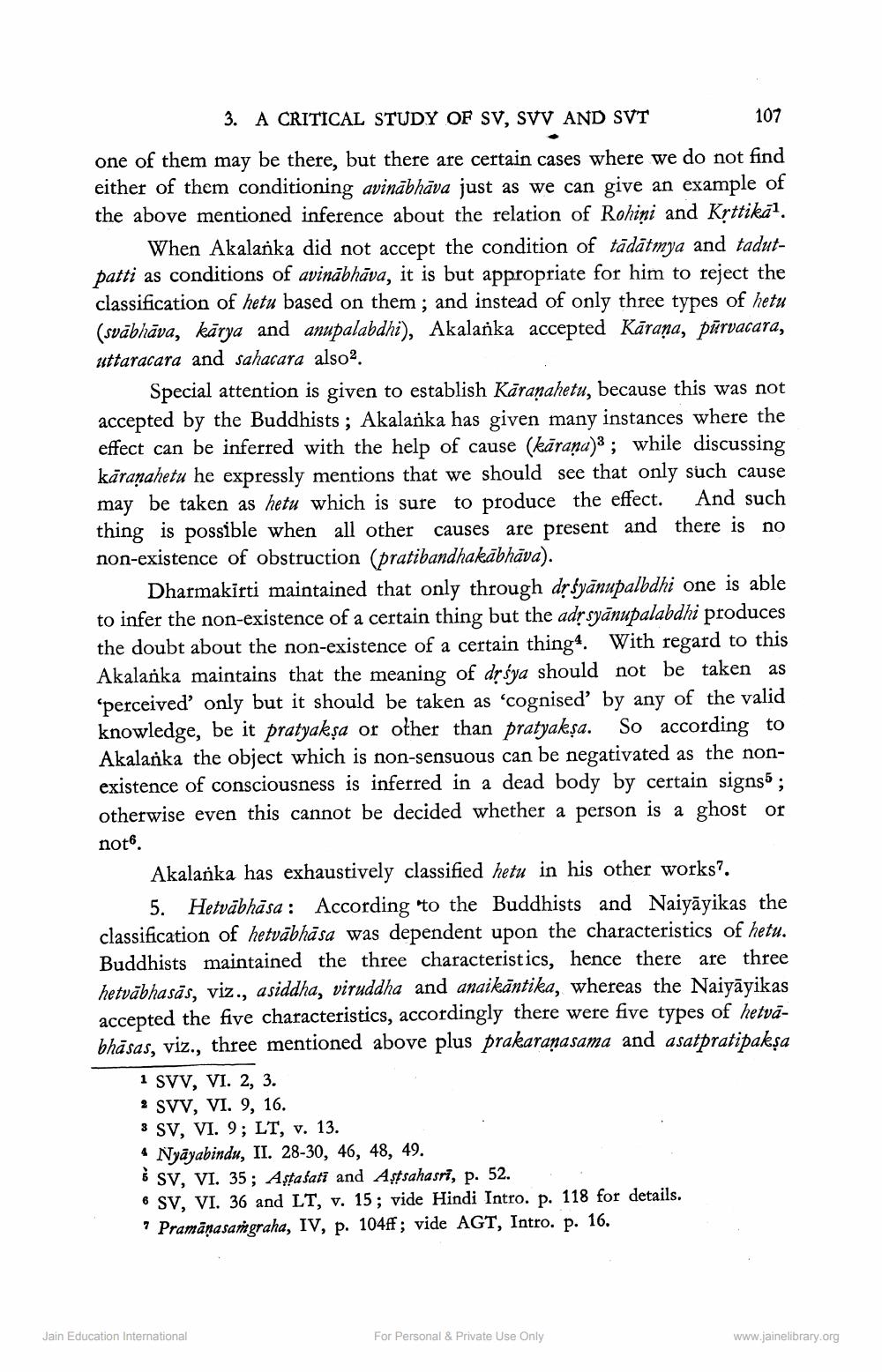________________
3. A CRITICAL STUDY OF SV, SVV AND SVT
107
·
one of them may be there, but there are certain cases where we do not find either of them conditioning avinābhāva just as we can give an example of the above mentioned inference about the relation of Rohini and Krttikā1.
When Akalanka did not accept the condition of tādātmya and tadutpatti as conditions of avinābhāva, it is but appropriate for him to reject the classification of hetu based on them; and instead of only three types of hetu (svābhāva, karya and anupalabdhi), Akalanka accepted Karaṇa, pūrvacara, uttaracara and sahacara also2.
Special attention is given to establish Karaṇahetu, because this was not accepted by the Buddhists; Akalanka has given many instances where the effect can be inferred with the help of cause (karana)3; while discussing karaṇahetu he expressly mentions that we should see that only such cause may be taken as hetu which is sure to produce the effect. And such thing is possible when all other causes are present and there is no non-existence of obstruction (pratibandhakābhāva).
Dharmakirti maintained that only through dryanupalbdhi one is able to infer the non-existence of a certain thing but the adr syanupalabdhi produces the doubt about the non-existence of a certain thing4. With regard to this Akalanka maintains that the meaning of driya should not be taken as 'perceived' only but it should be taken as 'cognised' by any of the valid knowledge, be it pratyakṣa or other than pratyakṣa. So according to Akalanka the object which is non-sensuous can be negativated as the nonexistence of consciousness is inferred in a dead body by certain signs5; otherwise even this cannot be decided whether a person is a ghost or not6.
Akalanka has exhaustively classified hetu in his other works?.
5. Hetvābhāsa: According to the Buddhists and Naiyayikas the classification of hetvabhasa was dependent upon the characteristics of hetu. Buddhists maintained the three characteristics, hence there are three hetvābhasās, viz., asiddha, viruddha and anaikāntika, whereas the Naiyayikas accepted the five characteristics, accordingly there were five types of hetvabhāsas, viz., three mentioned above plus prakaraṇasama and asatpratipaksa
1 SVV, VI. 2, 3.
2 SVV, VI. 9, 16.
3 SV, VI. 9; LT, v. 13.
Nyayabindu, II. 28-30, 46, 48, 49.
10
SV, VI. 35; Astasati and Aştsahasri, p. 52.
6 SV, VI. 36 and LT, v. 15; vide Hindi Intro. p. 118 for details. "Pramanasamgraha, IV, p. 104ff; vide AGT, Intro. p. 16.
Jain Education International
For Personal & Private Use Only
www.jainelibrary.org




